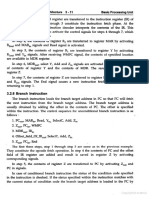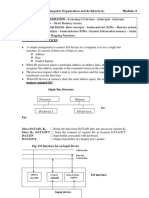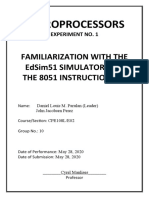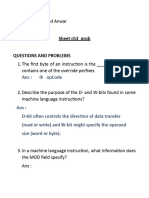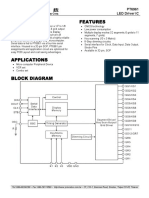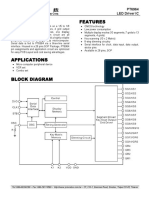0% found this document useful (0 votes)
342 views2 pagesAssignment 3
This document provides instructions for designing a 4-stage pipelined RISC processor that can execute ADD, SUB, NAND, and NOR instructions. It includes 3 steps:
1) Draw the architecture diagram and name the blocks.
2) Create behavioral models for each block in Verilog/VHDL.
3) Build the top-level structural model by instantiating and connecting the blocks.
It also provides details on initializing the instruction memory and register file with sample programs and data, and specifications for the pipeline registers and instruction memory.
Uploaded by
Dhivya NCopyright
© © All Rights Reserved
We take content rights seriously. If you suspect this is your content, claim it here.
Available Formats
Download as PDF, TXT or read online on Scribd
0% found this document useful (0 votes)
342 views2 pagesAssignment 3
This document provides instructions for designing a 4-stage pipelined RISC processor that can execute ADD, SUB, NAND, and NOR instructions. It includes 3 steps:
1) Draw the architecture diagram and name the blocks.
2) Create behavioral models for each block in Verilog/VHDL.
3) Build the top-level structural model by instantiating and connecting the blocks.
It also provides details on initializing the instruction memory and register file with sample programs and data, and specifications for the pipeline registers and instruction memory.
Uploaded by
Dhivya NCopyright
© © All Rights Reserved
We take content rights seriously. If you suspect this is your content, claim it here.
Available Formats
Download as PDF, TXT or read online on Scribd
/ 2











